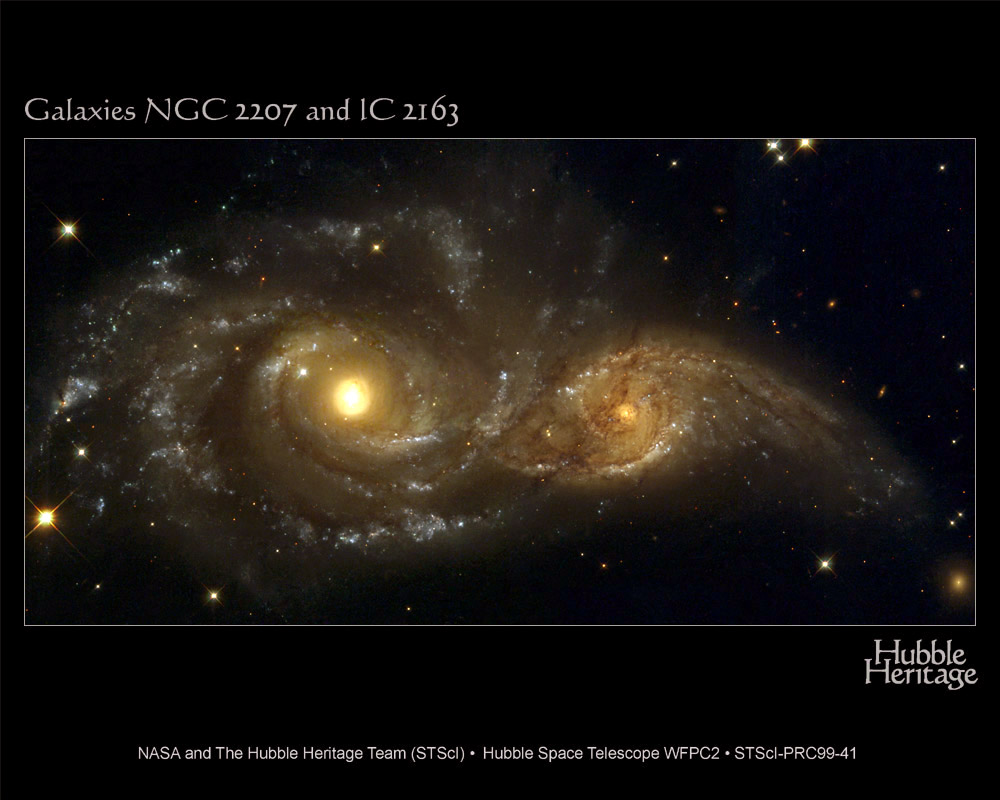 |
And, as these spectacular examples show, they still do! |
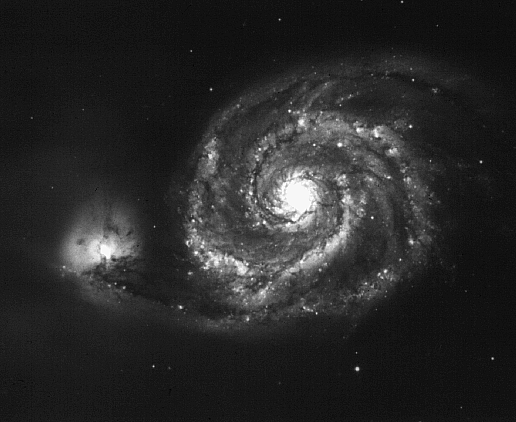 |
Growing Galaxies: Black Holes, Mergers, and Starbursts
Key points: Galaxy cannibalism; collisions and starbursts; mergers; Black hole/stellar mass relation; implications of these processes for the evolution of galaxies
Because galaxies are relatively large compared to their separations, there is a non-negligible probability to this day that they will collide.
 |
And, as these spectacular examples show, they still do! |
 |
This process is the basic way galaxies grow. We discussed it with regard to galaxy formation, now we will take a closer look at what happens to the individual galaxies.
 |
The Magellanic Clouds are two small galaxies within the Local Group and very close to the Milky Way. It is likely that the Milky Way is in the early stages of such an event with them! This radio image of atomic hydrogen shows a streamer of gas (="Leading Arm") being stripped from the Magellanic Clouds (LMC & SMC) and falling into the Milky Way (Galactic Plane). (From M. Putnam, CSIRO, http://www.csiro.au/news/mediarel/mr1998/mr98194.html) |
 |
To the left is an artist's concept of how the Milky Way is stripping
gas from the Large and Small Magellanic Clouds. (from D. Parr, CSIRO, see http://antwrp.gsfc.nasa.gov/apod/ap980826.html)
This process is probably the beginning of the Milky Way absorbing the Magellanic Clouds in a future merger. A similar fate may await many other small members of the Local Group, merging either with the Andromeda Galaxy or with the Milky Way. Here is an animation of how it will happen
|
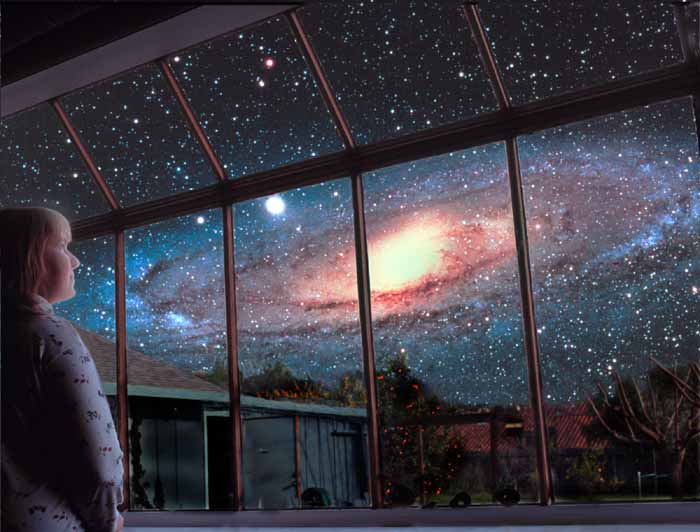 |
In addition, the Milky Way and the Andromeda galaxy are approaching
each other with a speed of 300,000 miles per hour.
Is this what the sky will look like at some future time? (From T. & D. Hallas, http://www.astrophoto.com/index.htm) If we hit head-on, it will set in motion a chain of events that will result in the two galaxies merging into one giant one. |
Modeling Galaxy Collisions
We can model the collisions using computer simulations -- the laws of motion and gravity are all that's required..
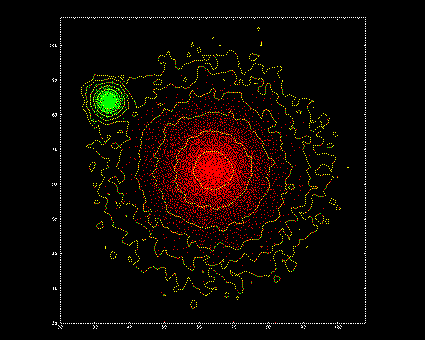 |
This simulation shows what happens when a small "green" galaxy collides with a large "red" one. The contours show the overall distribution of starlight, since in reality we have no convenient way to tell the stars that belonged to one from those that belonged to the other. In this case, both galaxies are ellipticals (without spiral disks). The smaller galaxy loses energy as a whole, while some of its stars are given high velocities and escape. As a result, it gets captured and spirals inward. |
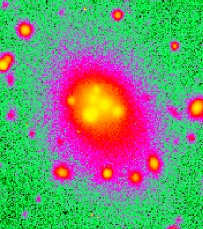 |
We see evidence of such collisions and mergers between elliptical galaxies. Some very large ellipticals at the centers of galaxy clusters have multiple nuclei, which can only result from the merging of galaxies. (central galaxy of cluster Abell 3827, from M. J. West) |
The galaxy is dubbed a "starburst galaxy." By modeling a starburst as the summation of the outputs of many newly formed stars, we have been able to match the properties of these far-infrared bright galaxies so we are confident that stars heat the dust.
Similar interactions can trigger active
nuclei ![]()
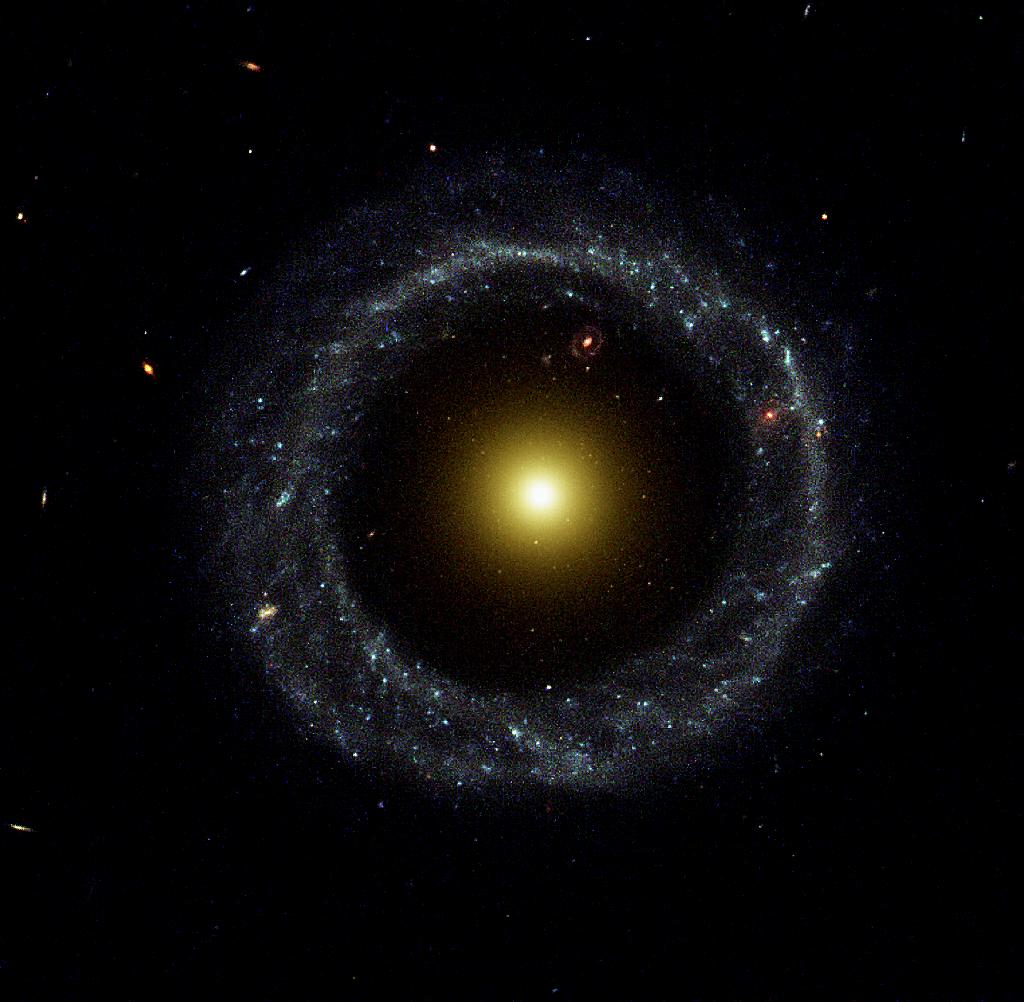 |
Here is the result of a head-on collision, leaving a large star forming ring (HST, NASA, JPL) |
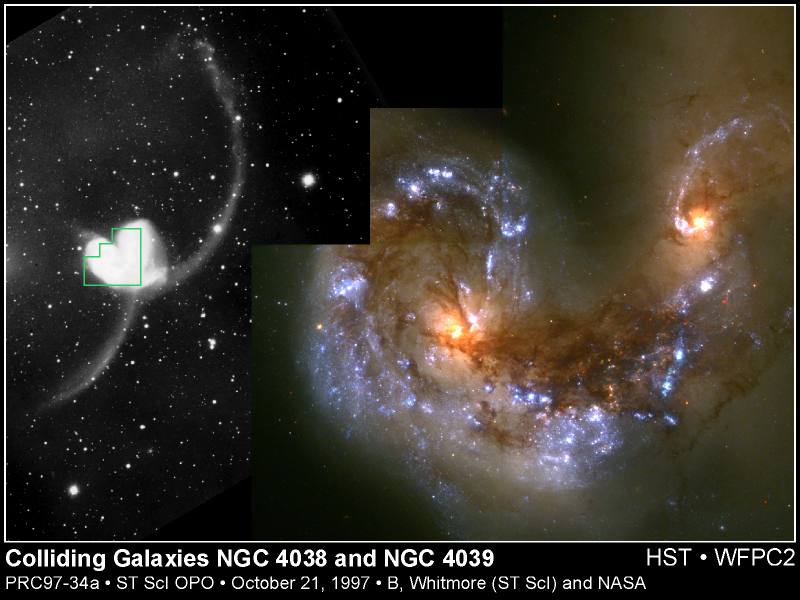 |
In this case (called, for obvious reasons, "the antennae"), stars have been stripped out of the galaxies and are streaming into space, while in the center there are huge star forming regions, many enshrouded in dusty molecular clouds (that look red because of interstellar reddening). To the far left is a large scale view, with the region of the color image outlined. |
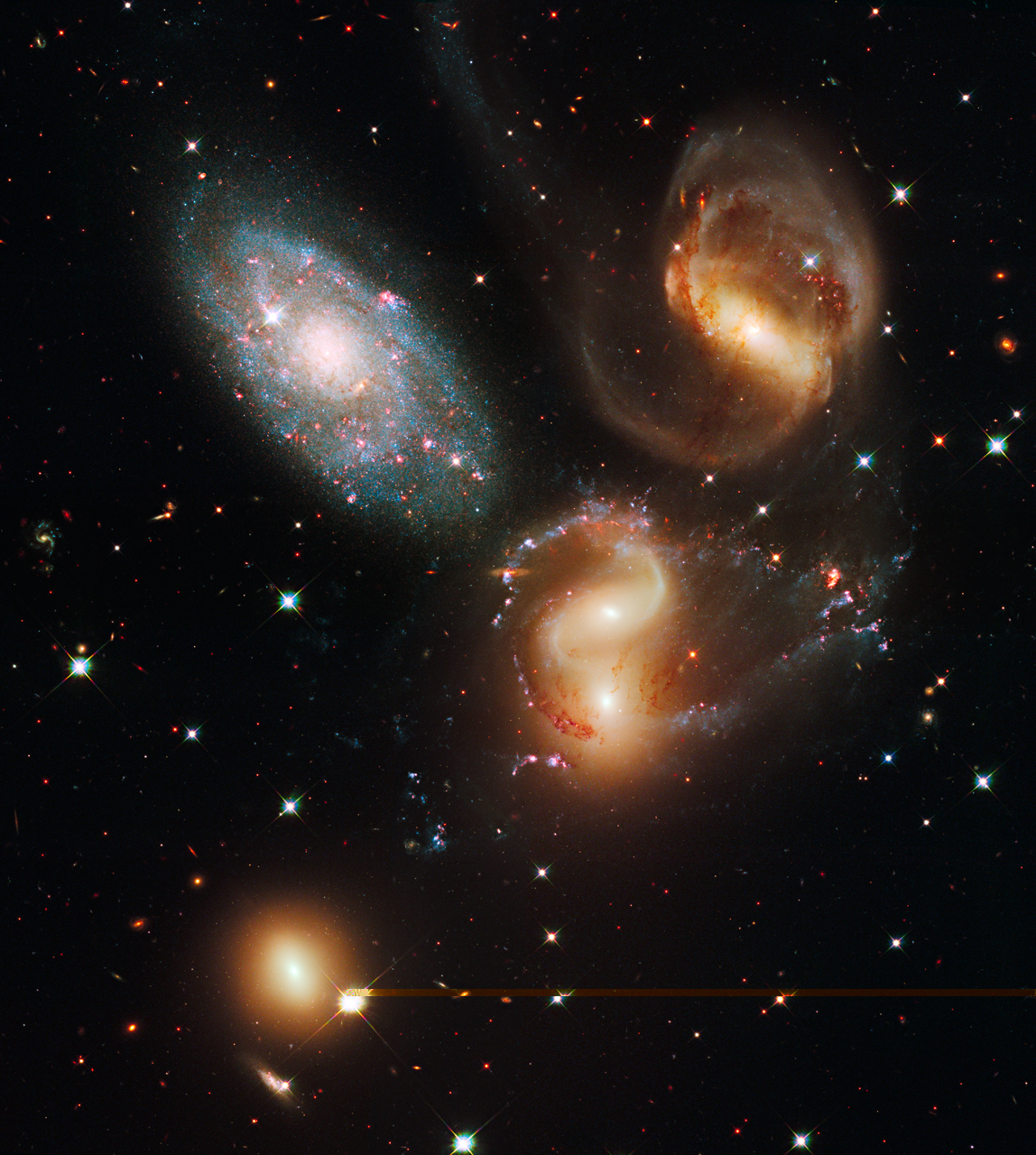 |
Stephan's Quintet is another
famous example of interacting galaxies. (From
Astronomy Picture of the Day, NASA, ESA, and Hubble SM4 ERO Team, http://apod.nasa.gov/apod/ap090911.html)
|
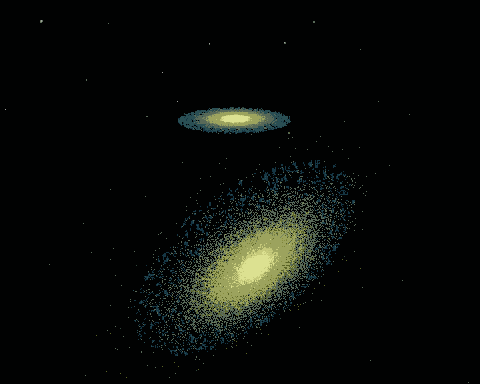 |
This simulation shows the collision of two disk galaxies, with
results similar to the antennae above.
In collisions of this type, the bulk of both
galaxies tends to merge into a single new galaxy |
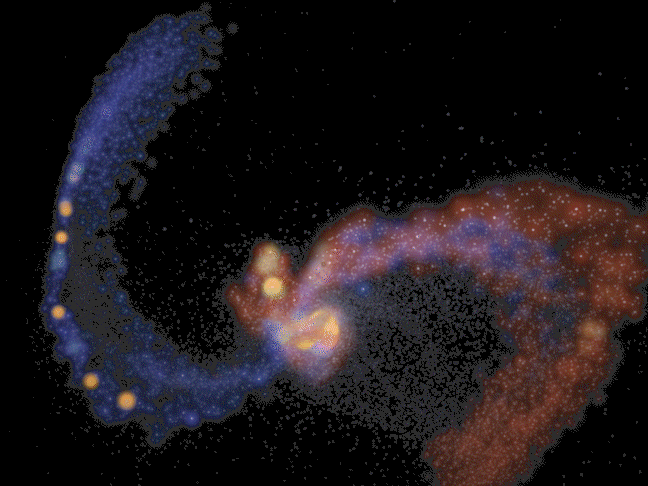 |
Here is a 'still' of theoretical merging disk galaxies. The gas is colored red and the stars blue. The stars are distributed roughly as in the antennae, and the gas has been collected into dense concentrations that become the sites for vigorous star formation, also as seen in the antennae. |
Smash galaxies together yourself! Its fun!!http://burro.cwru.edu/JavaLab/GalCrashWeb/ (your computer must be JAVA-enabled)
|
Although these processes sound chaotic, they lead to an orderly relation. The central massive black holes of galaxies have a fixed proportion in mass to the mass in stars in the bulge of the galaxy - somewhere near 0.1% regardless of the overall mass of the system. (from Stardate, |
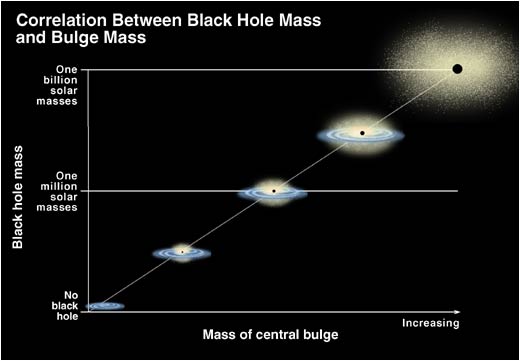 |
| Somehow the rest of the galaxy "knows" what
is happening down in its nucleus. We think black holes grow in part from
mergers also - if the two colliding galaxies both have central black holes,
they will tend to sink toward the common center and eventually join
together.(from NASA,
http://www.space.com/imageoftheday/image_of_day_060203.html)
Also, the turbulent gas motions set in place by the merger are just what is needed to fuel the central black hole and get it to flare up into an active nucleus. At the same time, the rest of the galaxy is likely to be experiencing a big burst of star formation. From that point, our picture gets a little murky. The most popular idea is that the gravitational field of the stars in the bulge influences how much mass can be collected in the center and assembled into the black hole. It has also been suggested that jets and winds from the active nucleus can disrupt the star formation in the rest of the galaxy, and that this happens in a fashion that helps regulate the mass in stars to stay proportional to that in the black hole. (right image from Don Dixon) |
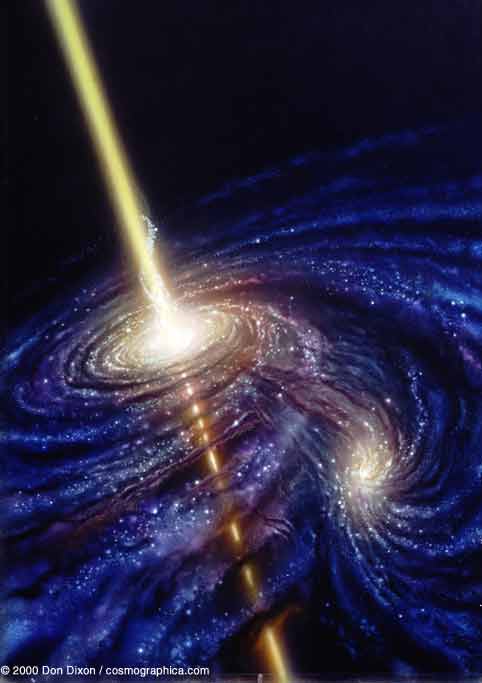 |
Test your understanding before going on![]()

Ultraviolet view of M81 enhances spiral arms, from APOD, NASA, UIT: http://antwrp.gsfc.nasa.gov/apod/ap960713.html |

Far Side by Gary Larson, from Peter Barthel, http://www.astro.rug.nl/~pdb/ |
|
Click to return to syllabus |
||
| Click to return to Spiral Arms | hypertext |
Click to go to the Center of the Milky Way |